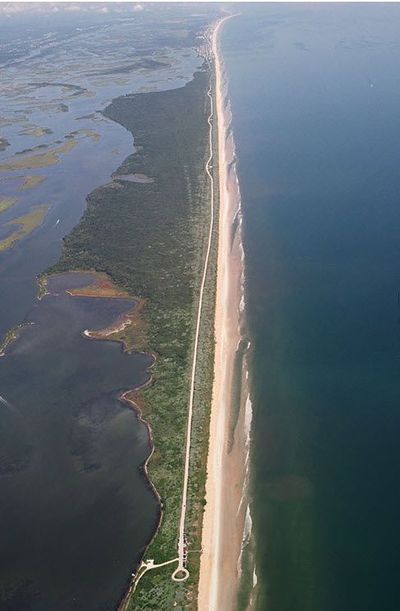Glossary:Bar-built estuary
Bar-built Estuaries
Bar-built or restricted-mouth estuaries occur when sandbars or barrier islands are built up by ocean waves and currents along coastal areas fed by one or more rivers or streams. The streams or rivers flowing into bar-built estuaries typically have a very low water volume during most of the year. Under these conditions, the bars may grow into barrier beaches or islands and the estuary can become permanently blocked. The area between the coast and the barrier beaches or islands are protected areas of calm water called lagoons.
Barrier beaches or islands break the impact of destructive ocean waves before they can reach the estuary and mainland, consequently protecting them. The barrier beaches take the brunt of the waves' force and are sometimes completely washed away, leaving the estuary and coast exposed and vulnerable. During heavy rains, large volumes of water flowing down the river or stream can also completely wash away small bars and reopen the mouth of the estuary (Ross, 1995; Sumich, 1996).
Bar-built estuaries are common along the Gulf Coast of Texas and Florida, in the Netherlands, and in parts of North Carolina. Good examples are Pamlico Sound in North Carolina, Matagorda Bay in Texas, and the Nauset Barrier Beach System on Cape Cod, Massachusetts.
Source: https://oceanservice.noaa.gov/education/kits/estuaries/media/supp_estuar04_barbuilt.html

